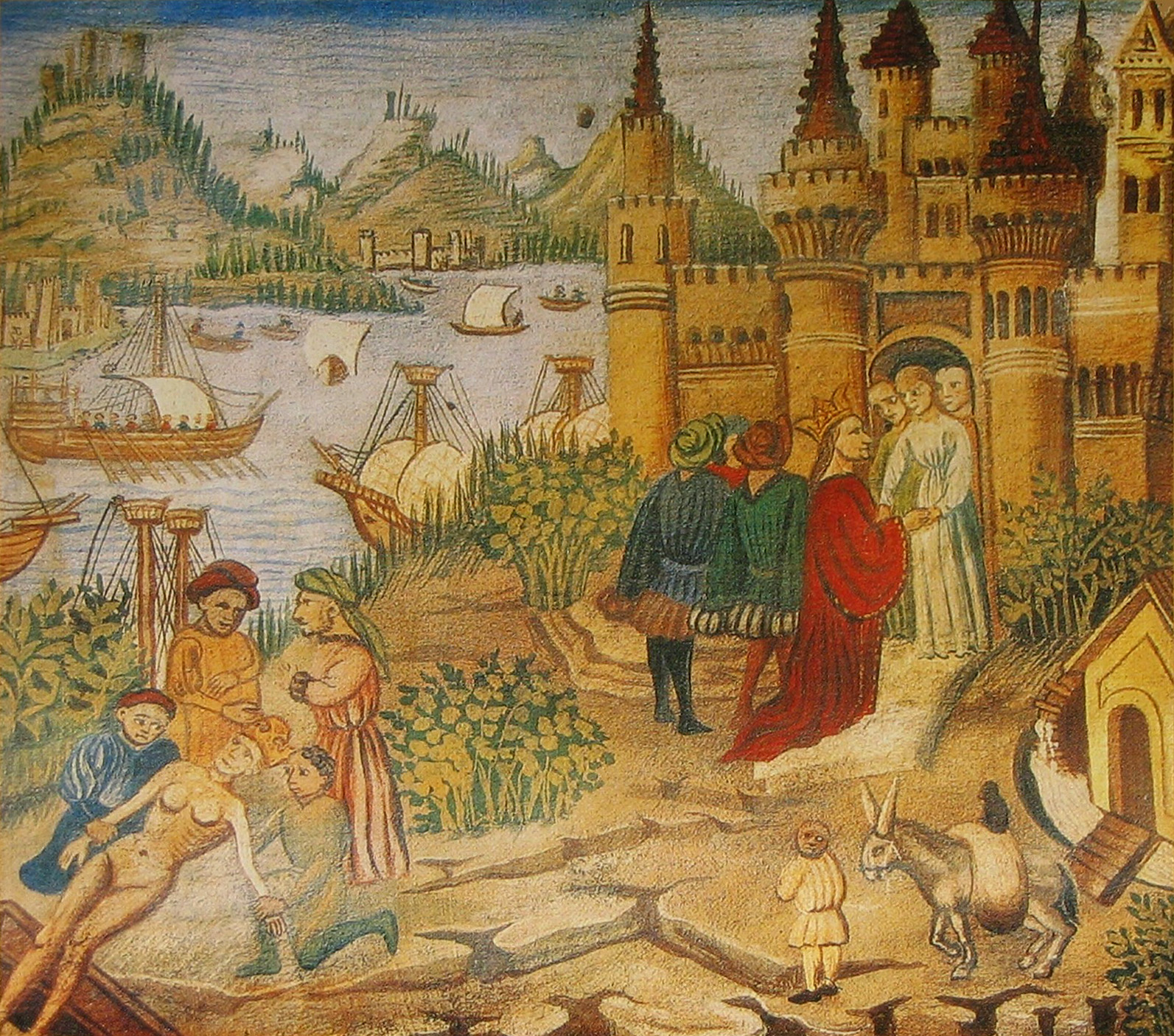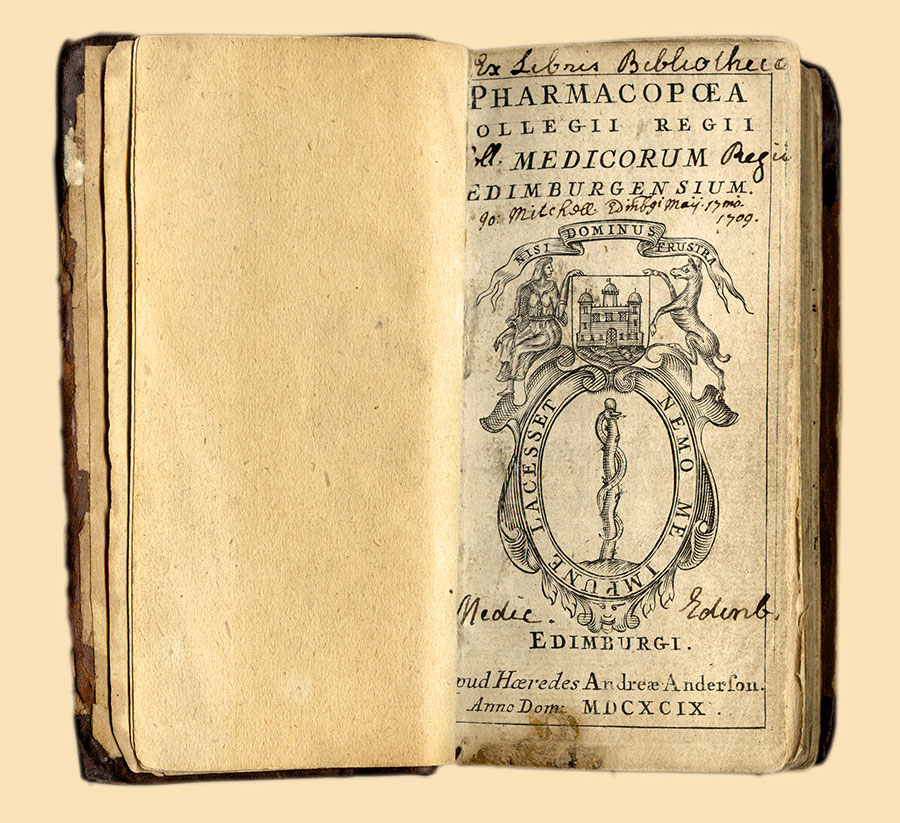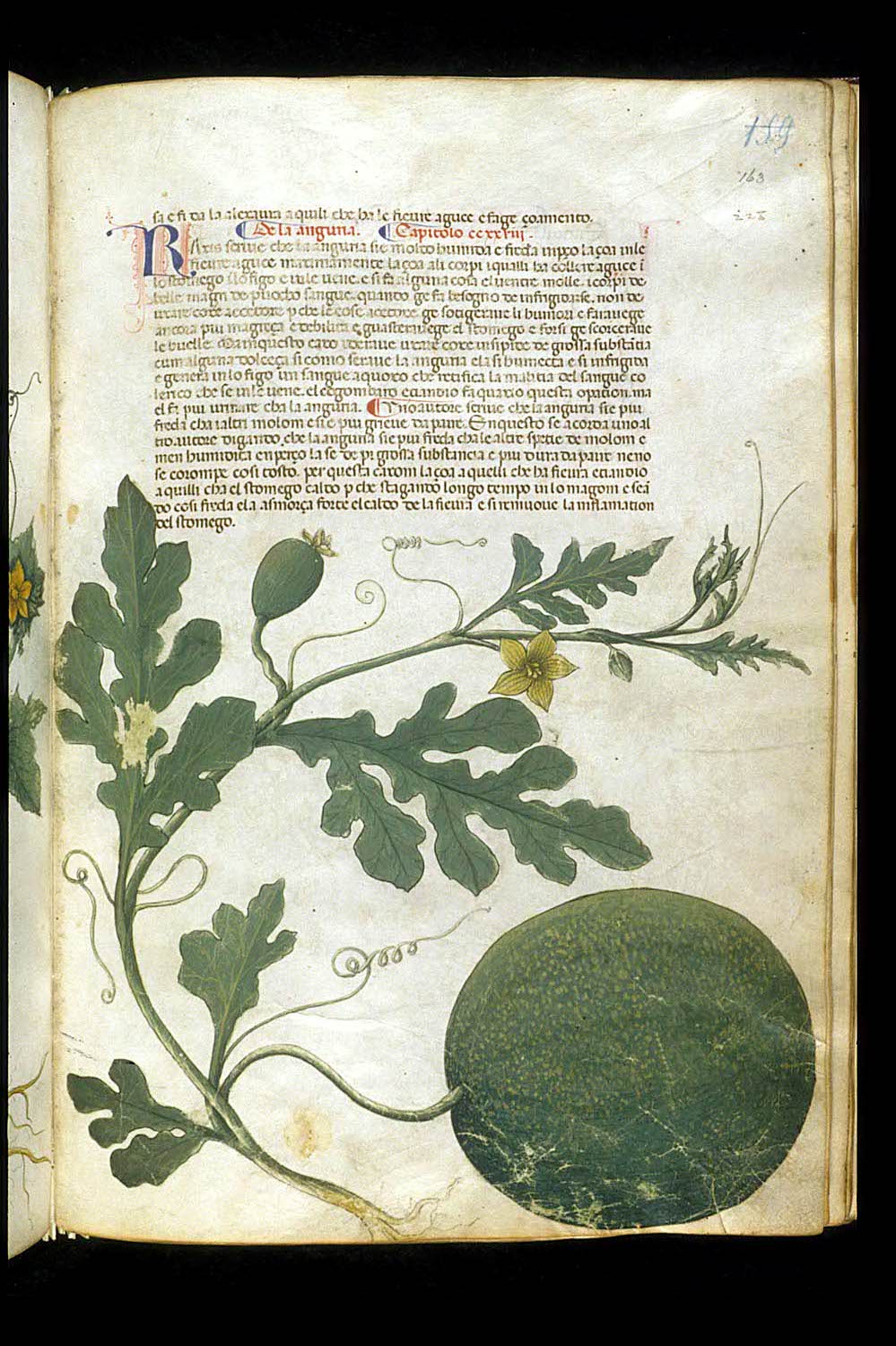|
Matthaeus Silvaticus
Matthaeus Silvaticus or Mattheus Sylvaticus (c. 1280 – c. 1342) was a medieval Latin medical writer and botanist. His Life and Encyclopedia Matthaeus Silvaticus was born in northern Italy, probably Mantua. He was a student and teacher in botany and medicine at the School of Salerno in southern Italy. His only notability is for writing a 650-page encyclopedia about medicating agents (a pharmacopoeia) which he completed about year 1317 under the Latin title ''Pandectarum Medicinae'' or ''Pandectae Medicinae'' (English: ''Encyclopedia of Medicines''). Most of the medicating agents were botanicals ("herbal medicines"). The presentation is in alphabetical order. The bulk of his encyclopedia is compiled from earlier medicine books, including books by Dioscorides, Avicenna, Serapion the Younger, and Simon of Genoa Simon may refer to: People * Simon (given name), including a list of people and fictional characters with the given name Simon * Simon (surname), including a list of ... [...More Info...] [...Related Items...] OR: [Wikipedia] [Google] [Baidu] |
Mantua
Mantua ( ; it, Mantova ; Lombard language, Lombard and la, Mantua) is a city and ''comune'' in Lombardy, Italy, and capital of the Province of Mantua, province of the same name. In 2016, Mantua was designated as the Italian Capital of Culture. In 2017, it was named as the European Capital of Gastronomy, included in the Eastern Lombardy District (together with the cities of Bergamo, Brescia, and Cremona). In 2008, Mantua's ''centro storico'' (old town) and Sabbioneta were declared by UNESCO to be a World Heritage Site. Mantua's historic power and influence under the Gonzaga family has made it one of the main artistic, culture, cultural, and especially musical hubs of Northern Italy and the country as a whole. Having one of the most splendid courts of Europe of the fifteenth, sixteenth, and early seventeenth centuries. Mantua is noted for its significant role in the history of opera; the city is also known for its architectural treasures and artifacts, elegant palaces, and the m ... [...More Info...] [...Related Items...] OR: [Wikipedia] [Google] [Baidu] |
School Of Salerno
The Schola Medica Salernitana ( it, Scuola Medica Salernitana) was a Medieval medical school, the first and most important of its kind. Situated on the Tyrrhenian Sea in the south Italian city of Salerno, it was founded in the 9th century and rose to prominence in the 10th century, becoming the most important source of medical knowledge in Western Europe at the time. Arabic medical treatises, both those that were translations of Greek texts and those that were originally written in Arabic, had accumulated in the library of Montecassino, where they were translated into Latin; thus the received lore of Hippocrates, Galen and Dioscorides was supplemented and invigorated by Arabic medical practice, known from contacts with Sicily and North Africa. As a result, the medical practitioners of Salerno, both men and women, were unrivaled in the medieval Western Mediterranean for practical concerns. Overview Founded in the 9th century, the school was originally based in the dispensary of a ... [...More Info...] [...Related Items...] OR: [Wikipedia] [Google] [Baidu] |
Pharmacopoeia
A pharmacopoeia, pharmacopeia, or pharmacopoea (from the obsolete typography ''pharmacopœia'', meaning "drug-making"), in its modern technical sense, is a book containing directions for the identification of compound medicines, and published by the authority of a government or a medical or pharmaceutical society. Descriptions of preparations are called monographs. In a broader sense it is a reference work for pharmaceutical drug specifications. Etymology The term derives from grc, φαρμακοποιία ''pharmakopoiia'' "making of (healing) medicine, drug-making", a compound of φάρμακον ''pharmakon'' "healing medicine, drug, poison", the verb ποιεῖν ''poiein'' "to make" and the abstract noun suffix -ία ''-ia''. In early modern editions of Latin texts, the Greek diphthong οι (''oi'') is latinized to its Latin equivalent ''oe'' which is in turn written with the ligature ''œ'', giving the spelling ''pharmacopœia''; in modern UK English, ''œ'' is w ... [...More Info...] [...Related Items...] OR: [Wikipedia] [Google] [Baidu] |
Dioscorides
Pedanius Dioscorides ( grc-gre, Πεδάνιος Διοσκουρίδης, ; 40–90 AD), “the father of pharmacognosy”, was a Greek physician, pharmacologist, botanist, and author of '' De materia medica'' (, On Medical Material) —a 5-volume Greek encyclopedia about herbal medicine and related medicinal substances (a pharmacopeia), that was widely read for more than 1,500 years. For almost two millennia Dioscorides was regarded as the most prominent writer on plants and plant drugs. Life A native of Anazarbus, Cilicia, Asia Minor, Dioscorides likely studied medicine nearby at the school in Tarsus, which had a pharmacological emphasis, and he dedicated his medical books to Laecanius Arius, a medical practitioner there. Though he writes he lived a "soldier's life" or "soldier-like life", his pharmacopeia refers almost solely to plants found in the Greek-speaking eastern Mediterranean, making it likely that he served in campaigns, or travelled in a civilian capacity, less ... [...More Info...] [...Related Items...] OR: [Wikipedia] [Google] [Baidu] |
Avicenna
Ibn Sina ( fa, ابن سینا; 980 – June 1037 CE), commonly known in the West as Avicenna (), was a Persian polymath who is regarded as one of the most significant physicians, astronomers, philosophers, and writers of the Islamic Golden Age, and the father of early modern medicine. Sajjad H. Rizvi has called Avicenna "arguably the most influential philosopher of the pre-modern era". He was a Muslim Peripatetic philosopher influenced by Greek Aristotelian philosophy. Of the 450 works he is believed to have written, around 240 have survived, including 150 on philosophy and 40 on medicine. His most famous works are '' The Book of Healing'', a philosophical and scientific encyclopedia, and '' The Canon of Medicine'', a medical encyclopedia which became a standard medical text at many medieval universities and remained in use as late as 1650. Besides philosophy and medicine, Avicenna's corpus includes writings on astronomy, alchemy, geography and geology, psyc ... [...More Info...] [...Related Items...] OR: [Wikipedia] [Google] [Baidu] |
Serapion The Younger
Serapion the Younger was the author of a medicinal-botany book entitled ''The Book of Simple Medicaments''. The book is dated to the 12th or 13th century. He is called "the Younger" to distinguish him from Serapion the Elder, aka Yahya ibn Sarafyun, an earlier medical writer with whom he was often confused. Serapion the Younger's ''Simple Medicaments'' was likely written in Arabic, but no Arabic copy survives, and there is no record of a knowledge of the book among medieval Arabic authors.''An Illustrated History of the Herbals'' by Frank J. Anderson, year 1999 pages 40, 42 and 44. The book was translated to Latin in the late 13th century and was widely circulated in late medieval Latin medical circles. [...More Info...] [...Related Items...] OR: [Wikipedia] [Google] [Baidu] |
Simon Of Genoa
Simon may refer to: People * Simon (given name), including a list of people and fictional characters with the given name Simon * Simon (surname), including a list of people with the surname Simon * Eugène Simon, French naturalist and the genus authority ''Simon'' * Tribe of Simeon, one of the twelve tribes of Israel Places * Şimon ( hu, links=no, Simon), a village in Bran Commune, Braşov County, Romania * Șimon, a right tributary of the river Turcu in Romania Arts, entertainment, and media Films * ''Simon'' (1980 film), starring Alan Arkin * ''Simon'' (2004 film), Dutch drama directed by Eddy Terstall Games * ''Simon'' (game), a popular computer game * Simon Says, children's game Literature * ''Simon'' (Sutcliff novel), a children's historical novel written by Rosemary Sutcliff * Simon (Sand novel), an 1835 novel by George Sand * '' Simon Necronomicon'' (1977), a purported grimoire written by an unknown author, with an introduction by a man identified only as "Si ... [...More Info...] [...Related Items...] OR: [Wikipedia] [Google] [Baidu] |
Movable Type
Movable type (US English; moveable type in British English) is the system and technology of printing and typography that uses movable components to reproduce the elements of a document (usually individual alphanumeric characters or punctuation marks) usually on the medium of paper. The world's first movable type printing technology for paper books was made of porcelain materials and was invented around AD 1040 in China during the Northern Song dynasty by the inventor Bi Sheng (990–1051). The earliest printed paper money with movable metal type to print the identifying code of the money was made in 1161 during the Song dynasty. In 1193, a book in the Song dynasty documented how to use the copper movable type. The oldest extant book printed with movable metal type, Jikji, was printed in Korea in 1377 during the Goryeo dynasty. The spread of both movable-type systems was, to some degree, limited to primarily East Asia. The development of the printing press in Europe may ... [...More Info...] [...Related Items...] OR: [Wikipedia] [Google] [Baidu] |
14th-century Latin Writers
As a means of recording the passage of time, the 14th century was a century lasting from 1 January 1301 ( MCCCI), to 31 December 1400 (MCD). It is estimated that the century witnessed the death of more than 45 million lives from political and natural disasters in both Europe and the Mongol Empire. West Africa experienced economic growth and prosperity. In Europe, the Black Death claimed 25 million lives wiping out one third of the European population while the Kingdom of England and the Kingdom of France fought in the protracted Hundred Years' War after the death of Charles IV, King of France led to a claim to the French throne by Edward III, King of England. This period is considered the height of chivalry and marks the beginning of strong separate identities for both England and France as well as the foundation of the Italian Renaissance and Ottoman Empire. In Asia, Tamerlane (Timur), established the Timurid Empire, history's third largest empire to have been ever establis ... [...More Info...] [...Related Items...] OR: [Wikipedia] [Google] [Baidu] |
History Of Medieval Medicine
History (derived ) is the systematic study and the documentation of the human activity. The time period of event before the invention of writing systems is considered prehistory. "History" is an umbrella term comprising past events as well as the memory, discovery, collection, organization, presentation, and interpretation of these events. Historians seek knowledge of the past using historical sources such as written documents, oral accounts, art and material artifacts, and ecological markers. History is not complete and still has debatable mysteries. History is also an academic discipline which uses narrative to describe, examine, question, and analyze past events, and investigate their patterns of cause and effect. Historians often debate which narrative best explains an event, as well as the significance of different causes and effects. Historians also debate the nature of history as an end in itself, as well as its usefulness to give perspective on the problems of the p ... [...More Info...] [...Related Items...] OR: [Wikipedia] [Google] [Baidu] |
Pharmacopoeias
A pharmacopoeia, pharmacopeia, or pharmacopoea (from the obsolete typography ''pharmacopœia'', meaning "drug-making"), in its modern technical sense, is a book containing directions for the identification of compound medicines, and published by the authority of a government or a medical or pharmaceutical society. Descriptions of preparations are called monographs. In a broader sense it is a reference work for pharmaceutical drug specifications. Etymology The term derives from grc, φαρμακοποιία ''pharmakopoiia'' "making of (healing) medicine, drug-making", a compound of φάρμακον ''pharmakon'' "healing medicine, drug, poison", the verb ποιεῖν ''poiein'' "to make" and the abstract noun suffix -ία ''-ia''. In early modern editions of Latin texts, the Greek diphthong οι (''oi'') is latinized to its Latin equivalent ''oe'' which is in turn written with the ligature ''œ'', giving the spelling ''pharmacopœia''; in modern UK English, ''œ'' i ... [...More Info...] [...Related Items...] OR: [Wikipedia] [Google] [Baidu] |








.jpg)
